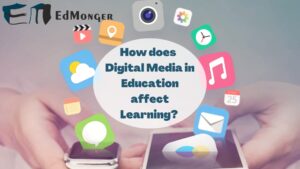Too lazy to change your teaching methods?
Check out what do students want from teaching methods now
The aim of education is to impart knowledge and skill at the highest level where an individual can utilize it in the demanding and changing world. When we look back, 50 years ago, it was not that demanding but now the demands of the 21st century are vast and fulfilling them requires more than just education. The exponential growth and complexity in the world call for a huge change in our entire education system. One might be handholding technology to solve these demands but, are teaching methods giving enough solution? Or do we have to delve deeper to find out the solutions? Let’s go through some points over 21st-century education.

20th-century teaching/learning
Now, let’s first look at what we were doing and from where this gap has come? When we talk about education, teacher-student and classrooms have a strong relationship, and the classroom plays a vital role. Firstly, talking about the classroom, it used to be a teaching methods classroom where teachers were speaking and students were only receptors, and the fashion of learning was passive. The goal of education was to pass the knowledge as discrete facts and maximum effort was to make children learn and understand the facts. If talking about the teachers, they were mainly the provider of knowledge and textbooks were the source. So, a student was considered good in studies only if he/she can memorize and understand the maximum knowledge given in the schools/colleges. Classrooms and libraries were considered as the most efficient place for learning where a bunch of people can sit and discuss the lessons. Literacy was defined by 3 R’s -Reading, Writing and Arithmetic. The questions were raised to this system when these classroom practices started to malfunction. Actually, in real-time, when the theories taught in school were not implemented and could solve the problems, it called for a change in the classroom practices as well as demanded education outside the class also. And, as a matter of fact ‘Nature demands change’ so does our education system. Globally, new inventions were made and fulfilled the need for change.
What do students want from educators nowadays?
Unlike 20th century students, now the students demand more flexibility in the classroom where they can be engaged while learning something without getting bored with old school methods. When just information is passed to them, they become reluctant, as the virtual world is full of all sorts of information. Now, textbooks are neither the only source nor teachers are the only providers. Therefore, the question arises, then what a teacher can provide a student apart from just knowledge? The answer to this question is quite simple, a teaching methods can help students as a facilitator with the following things:
How to solve problems with the given information?
How to validate the information?
How to analyze the information?
How to develop the required skill?
How to create something new with the information?
The education to this level will give them the skill set required for becoming a global citizen and hence, solve the main aim of education.
Also Check – Top 10 Teacher Training Course in India
Role of technology in 21st-century teaching
When we look at the picture of modern teaching /learning, the first thing that comes to our mind is the use of technology. But, the question is, “does 21st-century teaching-learning only mean using technology (smart boards, laptops and notepads) in the classroom?”
Actually No, technology can make more sense when its role is well defined in education. How the education system can benefit best, is by integrating technology with 4c’s of EDUCATION;
- Critical thinking and Problem solving
- Communication
- Collaboration
- Creativity and Innovation
It might seem quite difficult or vague to find the path of integration between 4c’s of education and technology but educators can find a clear solution to this. While taking the help of technology in teaching/learning one can filter the appropriate technology which gives the solution for problem-solving, communication, collaboration and giving birth to innovation and creativity in the students. This point can be made clearer with the following example,
For educating – “How the natural resources were used and how these resources can be saved for future?”, The students can use various search engines to find out the relevant information and in collaboration (using video conferencing or skype). They can present their ideas about how biofuel can replace the present fuel using tools like wikis etc. For developing analytical skills and critical thinking teachers can guide students to get better and relevant information from government official sites. The digital approach will be a great help to them but only correct directions will help them to reach a better place.
Conclusion
Again, getting back to the question from where we had started, “Are you a 21st-century teacher?” The answer is yes if you understand the paradigm shift in education and do the needful. The role of the teacher has not variably changed but yes teaching methods need to be changed. One has to understand the demand of society and if as an educator you want to prepare students for global citizenship you have to prepare to accept that change and follow it first.
The movement of change is a decade old, it’s high time to empower yourself with the grace of technology and move forward.




